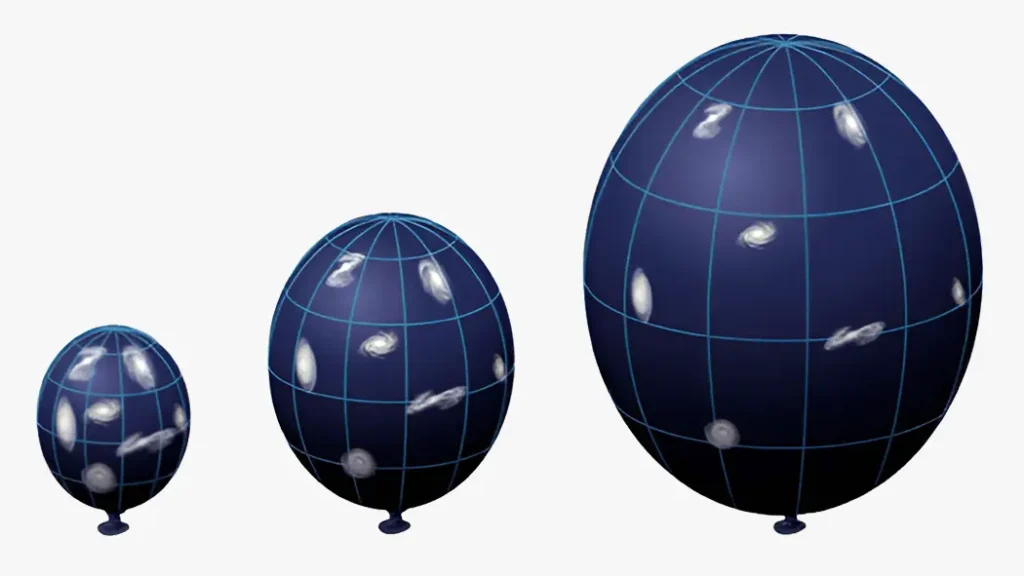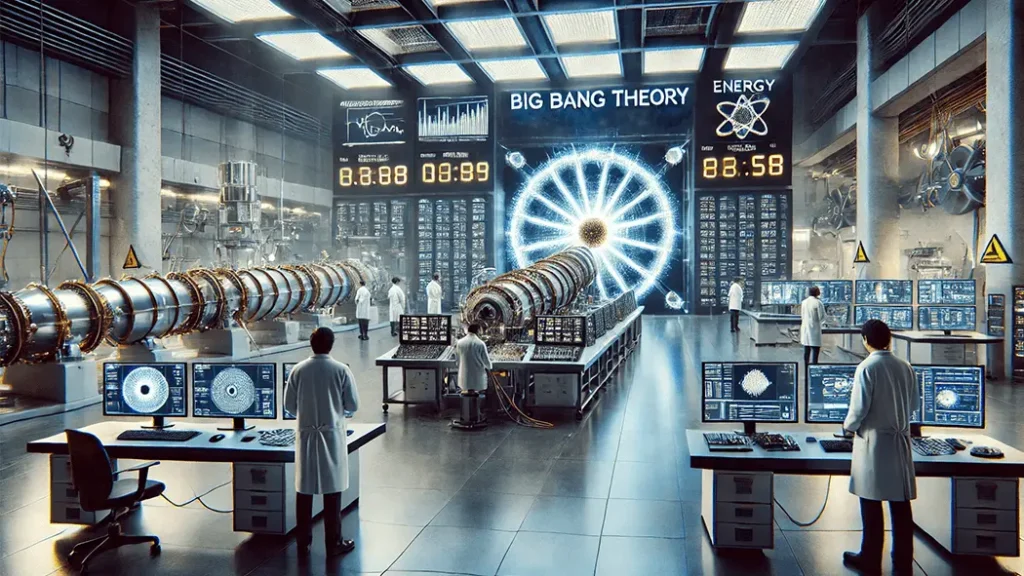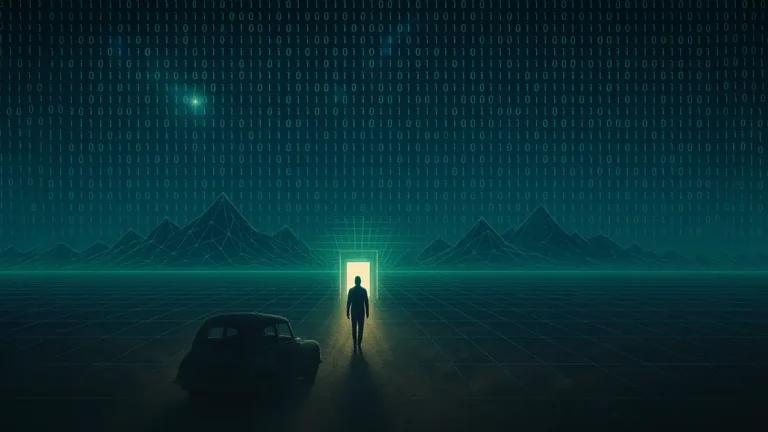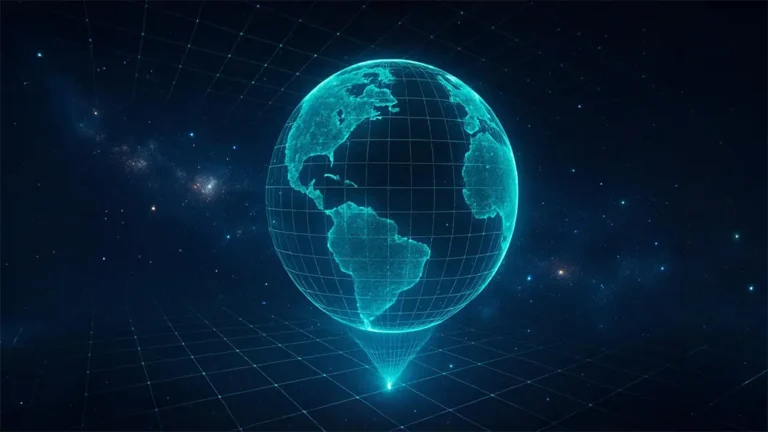Today, we know that the universe is about 13.8 billion years old. This estimate comes from the Big Bang Theory. Scientists consider it the best explanation for how the universe began and evolved. All scientific theories are based on evidence, and the Big Bang is no different. So, what is the evidence for the Big Bang Theory?
What Is the Big Bang Theory?
Before we dive deeper into the evidence for the Big Bang Theory, let us quickly recap what it is. The Big Bang Theory was first presented in 1927 by Georges Lemaitre. He was a Belgian priest and astronomer. This theory is the leading explanation for how our universe began.
The theory suggests that about 13.8 billion years ago, everything in the universe was packed into a single point. This point was incredibly hot, dense, and full of energy. Then, in an instant, it started to expand. This moment of expansion is thought to be the beginning of the universe.
This expansion did not stop. The universe has been expanding ever since. It has been creating galaxies, stars, planets, and everything in between.
Lemaitre’s theory was based on mathematical equations. It also included the idea that the universe must have started as something smaller. At that time, he did not have direct evidence like we have today. Later on, more and more evidence emerged that supported the Big Bang Theory.
Before the theory of Lemaitre, many famous scientists and philosophers believed that the universe had no beginning. They thought it had always existed in its current state. Here comes the big question. What is the compelling evidence for the Big Bang theory that convinced scientists around the world?
Evidence for the Big Bang Theory
There is strong scientific evidence for the Big Bang theory. The following six points highlight the most convincing observations that support this theory.
1. The Expanding Universe
One of the most convincing pieces of evidence for the Big Bang Theory is the expansion of the universe. In the early 20th century, many scientists believed that the universe was static. They thought that it had always been the same size. It was neither expanding nor contracting.
However, in 1929, astronomer Edwin Hubble discovered the exact opposite. He found that galaxies are moving away from us. The farther away a galaxy is from Earth, the faster it moves away. This led to the groundbreaking realization that the universe is expanding.
To understand this expansion, imagine the universe like a balloon. If we mark some points on the balloon’s surface, these points can represent galaxies. As the balloon inflates, every point moves farther away from the others. In the same way, as the universe expands, galaxies move away from each other.

This expansion provides strong evidence for the Big Bang Theory. The reasoning is very simple. Today, we see galaxies moving apart. If we reverse time, the galaxies would come closer together. Going back far enough, everything in the universe—matter and energy—would have been concentrated in a single point.
This is the core of the Big Bang Theory. It proposes that the universe began from this hot, dense state and has been expanding ever since. The observed expansion today is a strong indicator that the universe had a specific beginning. We call this beginning the Big Bang.
2. Cosmic Microwave Background Radiation (CMB)
In 1948, Fred Hoyle and two other scientists introduced the Steady State Theory. They presented it as an alternative to the Big Bang Theory. The Steady State Theory acknowledged that the universe is expanding. However, it claimed that the universe has no specific origin. It has always existed in this expanding state. To explain this, the theory proposed that new matter is created all the time as the universe expands. This keeps the overall density of the universe constant.
At first, the Steady State Theory received more attention than the Big Bang Theory. This was due to a lack of enough observational evidence to support the Big Bang Theory. However, everything changed in 1965 with the discovery of the CMB. This critical discovery shifted the tide in favor of the Big Bang Theory.
According to the Big Bang Theory, when the universe began, it was incredibly hot and full of energy. As the universe expanded, it cooled down. However, the intense heat from its early state should have left behind a signature—a faint glow or radiation. The Big Bang Theory predicts that this glow should still exist and fill the entire universe.
In 1965, scientists discovered this radiation, known as the Cosmic Microwave Background (CMB). It was coming from all directions in space. This faint microwave radiation matches what scientists predicted. It is a leftover glow from the hot, early universe. The Steady State Theory, on the other hand, neither predicted nor could explain the CMB. In this way, the discovery of the CMB became strong evidence for the Big Bang Theory.

3. Abundance of Light Elements
The Big Bang Theory suggests that a few minutes after the universe began, light elements like hydrogen and helium were formed. The calculations predict that about 75% of the ordinary matter in the universe would be hydrogen, and about 25% would be helium.
When scientists measure the amounts of these light elements in the universe today, they find something interesting. The amounts closely match the predictions of the Big Bang Theory.
The close match between the predicted and observed amounts of light elements strongly supports the Big Bang Theory. It is like a cosmic recipe that turned out just right!
4. Structure Formation in the Universe
The Big Bang Theory states that, in the early universe, matter was spread out almost evenly. But some areas had a little more mass than others.
These small differences caused some regions to pull in more matter. Over time, this caused matter to gather into groups. These groups eventually became stars, galaxies, and larger structures.
Astronomers observe that the universe has a web-like structure. This structure consists of galaxies that form clusters and superclusters. What we observe today aligns perfectly with the explanations of the Big Bang Theory.
5. Looking Back in Time
The Big Bang Theory is widely accepted today. However, as we discussed earlier, there was once an alternative called the Steady State Theory. This theory suggested that the universe does not change much over time. It remains roughly the same.
But there is a catch. When we see something in the universe, we see it through the light that comes from it. Light takes a long time to travel across the universe. So, when we observe galaxies that are very far away, we are actually seeing them as they were light-years ago. We do not see them as they are today. In this way, we are essentially looking back in time. This helps us to compare older galaxies with more recent ones.
What we see is clear. Older galaxies look very different from younger ones. This shows that the universe has changed significantly over time. This observation fits much better with the Big Bang Theory than the Steady State Theory. This further supports the idea that the universe had a beginning. It has been evolving ever since.
6. Experiments in Particle Physics
The Big Bang Theory makes many predictions about the early universe. This is a key feature of the theory. Recent experiments in particle physics help confirm these predictions.
In the early universe, the conditions were extreme. Temperatures reached trillions of degrees. The energy levels were extremely high. At that time, the universe was a hot, dense “soup” of basic particles like quarks and gluons. To recreate these conditions, scientists use machines known as particle accelerators. These machines smash subatomic particles together at nearly the speed of light. When this happens, huge amounts of energy and new particles are created. This process is similar to what occurred just after the Big Bang.
By creating these conditions in the lab, scientists can observe how matter and energy interacted when the universe was very young. The results of these experiments consistently match the predictions of the Big Bang Theory. This gives us even more confidence in its accuracy.

Ending Notes: The Strength of the Big Bang Theory
The strength of the Big Bang Theory comes from its predictions. Many of these predictions have been confirmed by observations. Scientists make quantitative predictions and compare them with data. They consistently find that their predictions are correct. This makes the Big Bang far more than just a creation story. It is a scientific model that fits the evidence. For this reason, cosmologists are very confident that the Big Bang occurred. They are as sure of it as they are that the Earth orbits the Sun. As we continue to explore the universe, we are uncovering more evidence for the Big Bang Theory.




